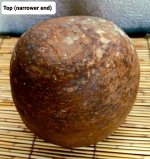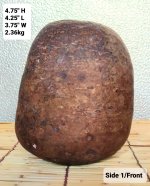The shopkeeper insisted that I buy these garden ornaments along with my other finds. Since I only needed to add $3, I relented. When I got home, I found out that the platform has a tomoe symbol at the bottom. And the rock is unusually heavy but non-magnetic. I think I just got myself a hammerstone, but not sure what the platform is supposed to be. Can anyone help me identify these two? Thank you very much in advance.
Amazon Forum Fav 👍
Attachments
-
 20220812_210420.jpg688.6 KB · Views: 75
20220812_210420.jpg688.6 KB · Views: 75 -
 20220812_154729.jpg852.1 KB · Views: 76
20220812_154729.jpg852.1 KB · Views: 76 -
 20220812_154718.jpg653.4 KB · Views: 61
20220812_154718.jpg653.4 KB · Views: 61 -
 20220812_154706.jpg523.5 KB · Views: 61
20220812_154706.jpg523.5 KB · Views: 61 -
 20220812_154654.jpg480.8 KB · Views: 60
20220812_154654.jpg480.8 KB · Views: 60 -
 20220812_154644.jpg463.7 KB · Views: 62
20220812_154644.jpg463.7 KB · Views: 62 -
 20220812_154624.jpg589.4 KB · Views: 74
20220812_154624.jpg589.4 KB · Views: 74 -
 20220812_210516.jpg635.8 KB · Views: 69
20220812_210516.jpg635.8 KB · Views: 69 -
 20220812_205847.jpg787.6 KB · Views: 73
20220812_205847.jpg787.6 KB · Views: 73 -
 20220812_205921.jpg881.7 KB · Views: 70
20220812_205921.jpg881.7 KB · Views: 70


